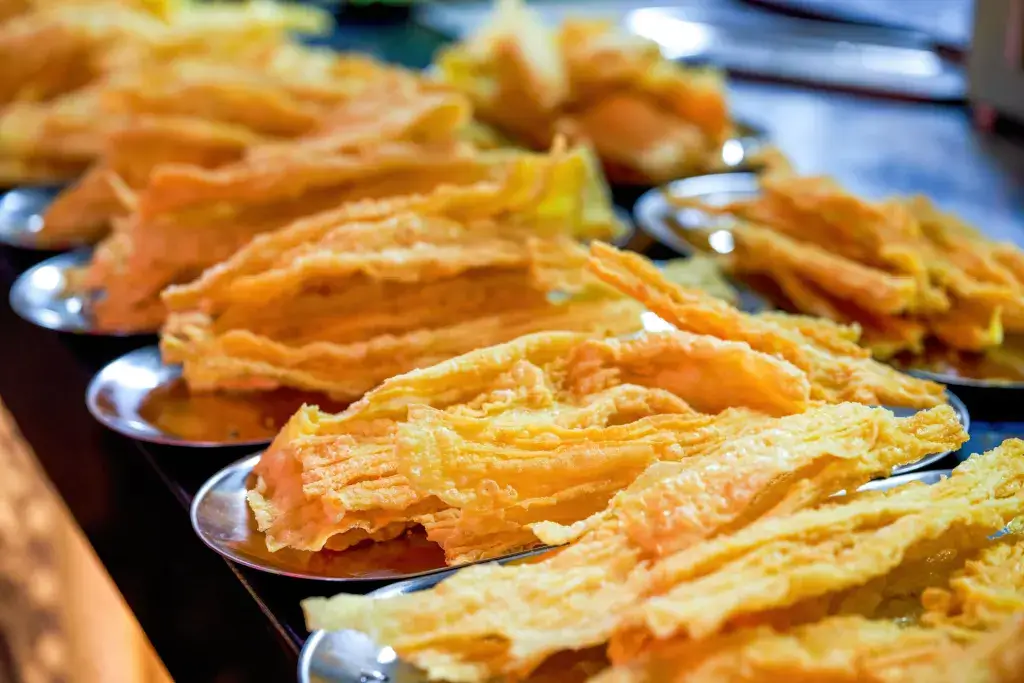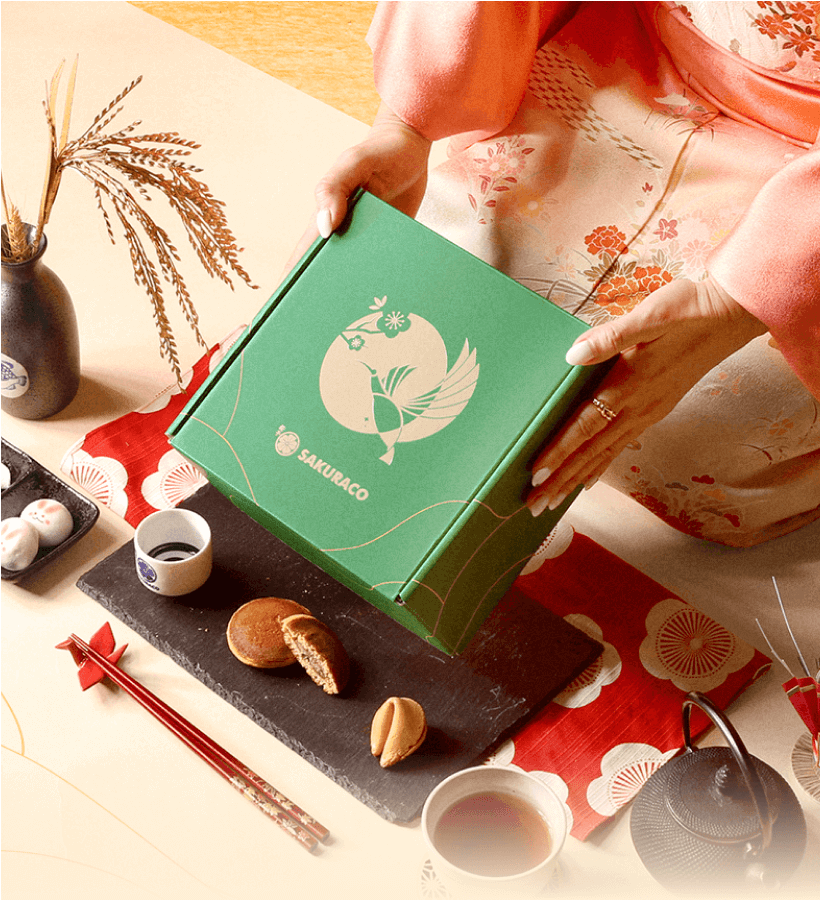Tofu is a staple of Japanese cuisine and is consumed in many forms. It is commonly seen in its soft, jelly-like state at supermarkets across Japan. But did you know that it can also be transformed into a crunchy snack and eaten in the form of chips? Their unique texture has been known since the 10th century.
This unassuming food can be traced back to ancient practices, so it is more than just a treat. It still plays an essential role in tea ceremonies, religious customs, and festivals, even in modern times. Today, we’ll take a deeper look into the story of this revered tofu snack.
Table of Contents
ToggleWhat are yuba chips?
Yuba chips are created from yuba, the thin skin that forms on the top of heated soy milk. This is different from tofu, which is made from the soy milk itself. The yuba is skimmed from the top of the tofu vats and dried into sheets. Frying these sheets imparts a nutty flavor, crisp texture, and distinctive airy crunch to the chips. But it also makes them extremely delicate, so they require careful handling. They contain no animal products, making them suitable for vegan-friendly dishes. Their versatility allows them to be served in soups or as a wrap.
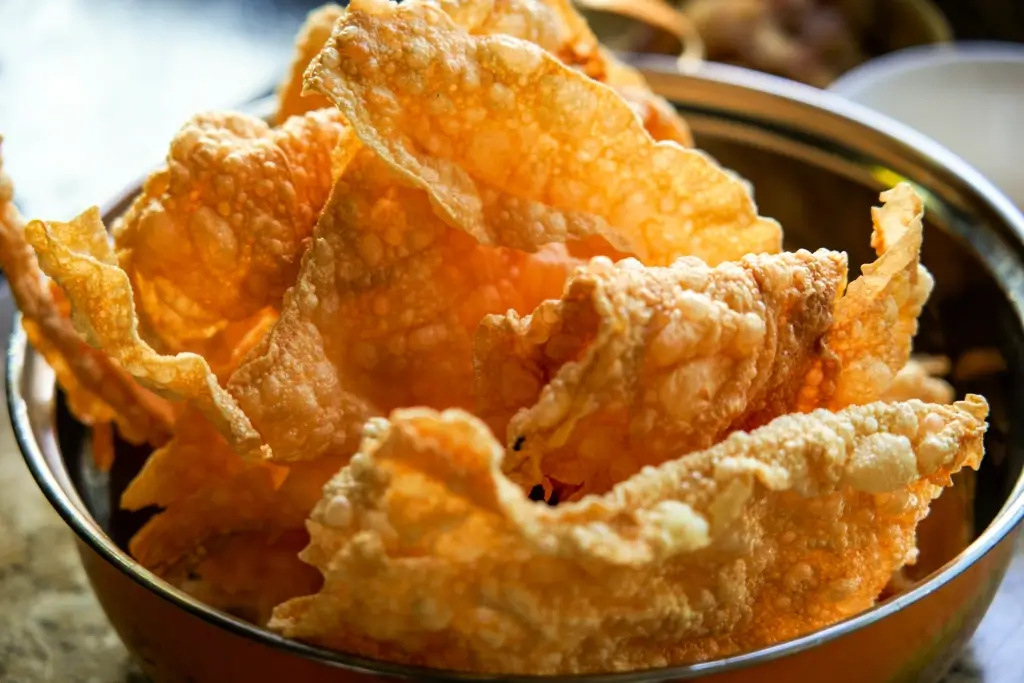
The origin of the name “yuba” is uncertain. However, it is believed that it was derived from “uba” (old woman), a reference to its wrinkled appearance. The practice of consuming this tofu byproduct was introduced from China during the Kamakura period (1185–1333). It was not too long before Kyoto and Nikko became key production hubs. By the Edo period (1603–1868), it had spread throughout Japan.
Cultural Significance of Yuba
Yuba holds a special place in the traditions of Kyoto’s Buddhist temples. This significance originated from the Buddhist principle of non-violence. In these teachings, it is prohibited to kill and eat an animal. Such an action is believed to interfere with spirituality and meditation. Because yuba contains no animal products, it came to represent simplicity and purity. As a result, it became highly valued by Zen monks. It is an example of shojin ryori or “devotion cuisine” in Japanese, and is served at temples like Enryakuji.
Are you looking for great snacks, such as yuba chips? Check out Sakuraco! Sakuraco delivers traditional Japanese snacks, sweets, teas, and more from local Japanese makers right to your door!
How do you make yuba chips?
Creating yuba chips is a relatively straightforward process. The main ingredients are dried yuba sheets and vegetable oil. First, oil is heated to about 175 degrees Celsius (347 degrees Fahrenheit) in a frying pan or wok. The sheets are then added to the hot oil. It only takes a few seconds to fry them until they turn golden brown. Once removed from the oil, they are placed on dry paper to absorb the excess oil. They can then be served with salt, seven-flavor chilli powder (shichimi togarashi), or wasabi powder, and stored in airtight containers to keep them crisp. It is commonly enjoyed with soy sauce as a dip.
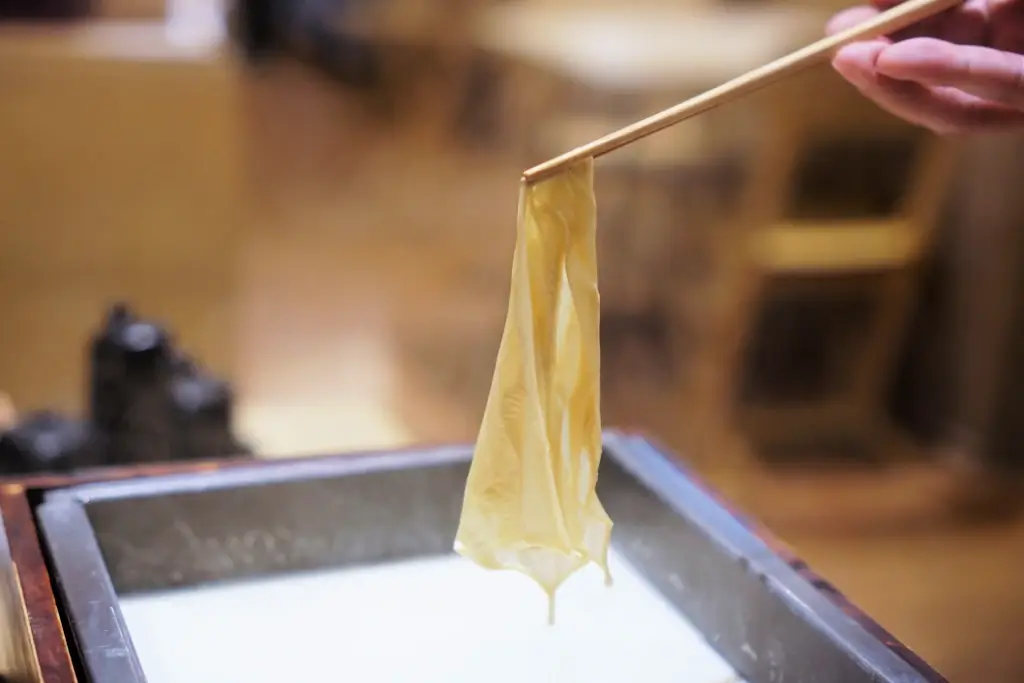
Where can I find yuba chips?
Yuba is commonly featured in kaiseki meals, which are renowned for their numerous courses and small portions. It also plays a part in tea ceremonies, as it pairs well with green tea. It can be found at festivals across the country, especially in western Japan. Traditional specialty shops are great places to purchase the chips.
Kyoto’s Yuba Han (founded in 1716) and Seike Yubadokoro, a 10-minute walk from Nijojo-mae Station near Nijo Castle, are popular sources. Asian markets, such as Ameyoko and Nishiki Market, are also excellent places. The chips can be purchased in bento boxes ranging from 500 to 1000 yen. When buying from online retailers, searching for nama-yuba (生湯葉) is a good way to ensure authenticity.
Why are yuba chips important in Japan?
Yuba chips are significant in Japan due to their integral role in Buddhist culture. They were a valuable source of protein for those whose religious beliefs prohibited them from consuming meat. This was significant hundreds of years ago, when even animal protein was scarce. This history has led to it being associated with discipline and has enabled it to maintain its position as temple cuisine. They also have a distinct advantage over other tofu products because they are dry, making them easy to store and transport.
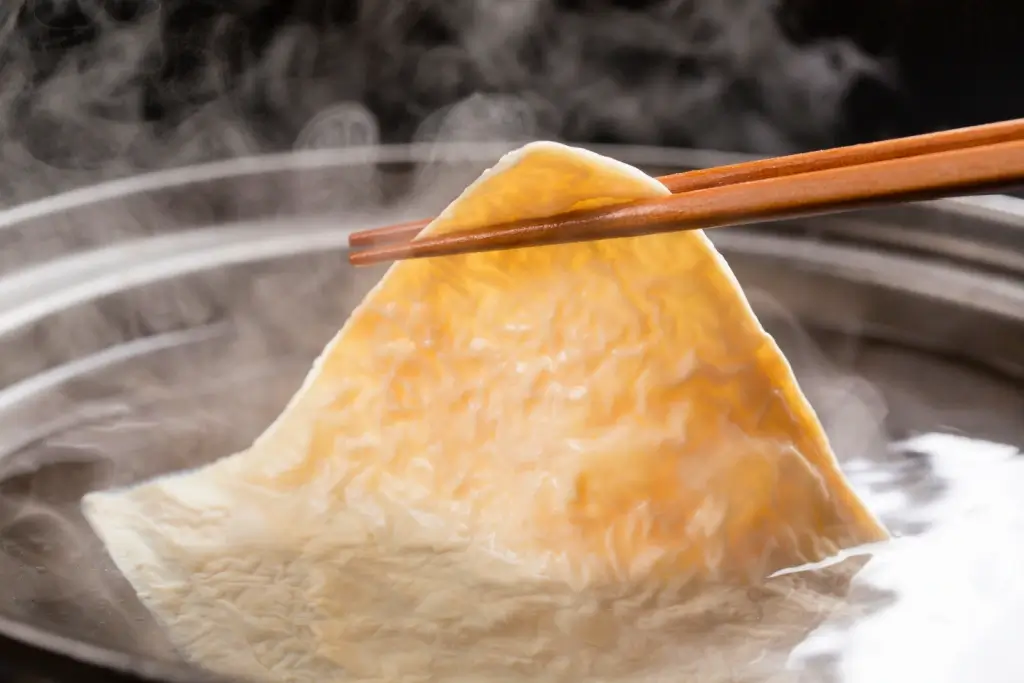
This is important when saving food for long periods without refrigeration. Their light taste and crunch make them a perfect fit for meals or as a standalone treat. Their practicality, versatility, and plant-based nature have even led to a boost in their popularity in the vegetarian community.
Yuba chips are a perfect example of Japan’s knack for transforming humble ingredients into tasty delicacies. Their light crunch carries centuries of tradition, mindfulness, and simplicity. Have you tried yuba chips? What do you think of their flavor? What is your favorite brand? Or make them at home? Share your favorite ways to enjoy them below! Let’s talk about snacks!


